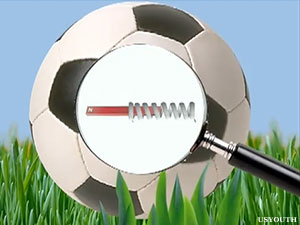Most of us take electricity for granted. (Good luck reading this story without it.) But 95 percent of the population in Africa lives with little to no access to it. In fact, more than 1.5 billion people -- one quarter of the world's population -- live in areas with no access to electricity. But a group of Harvard University students thought up an innovative answer to this problem. They developed the "sOccket" -- a soccer ball that creates usable energy from every kick.

Kids play soccer all the time and all over the world, but the majority of these children do not have homes with dependable electricity. Hence this "portable energy-harvesting device" which has a magnet inside that activates a capacitor when the ball is kicked. So the sOccket is part soccer ball, part portable generator, part community builder and part global health tool.
"We have seen the critical power issues faced by people in these areas every day," says sOccket co-founder Jessica O. Matthews, "as well as the happiness these same people experience whenever they play soccer. These were key in providing the foundation for the idea."
.
For each 15 minutes of play, the sOccket can store enough energy to power a small LED light for three hours. ("What really sparked the idea was the need to come up with something for our engineering class final, so we wouldn't fail," says Matthews.) The ball has been successfully piloted in South Africa, although the team has plans to eventually market a commercial version of the product in Western countries as a high-end tech toy (perhaps using a "buy one-give one" model, to fund the cost of doling out sOccket balls in developing countries).
But wait, there's more!
In the developing world, access to potable water is also a big issue -- not just for drinking but for washing clothes. So say hello to the "Swirl", a (slightly larger) soccer ball that can be loaded with dirty laundry, dribbled to a water source, and capable of washing clothes on the roll home. Imagine having jerseys washed even before the Tang is poured. (Why didn't a soccer mom think of this?)
So, if a soccer ball can reduce the need for fume-filled kerosene lamps -- or even excess water in your Whirlpool -- imagine what a basketball could do.
-- Follow Erica Orange on Twitter at @ErOrange




